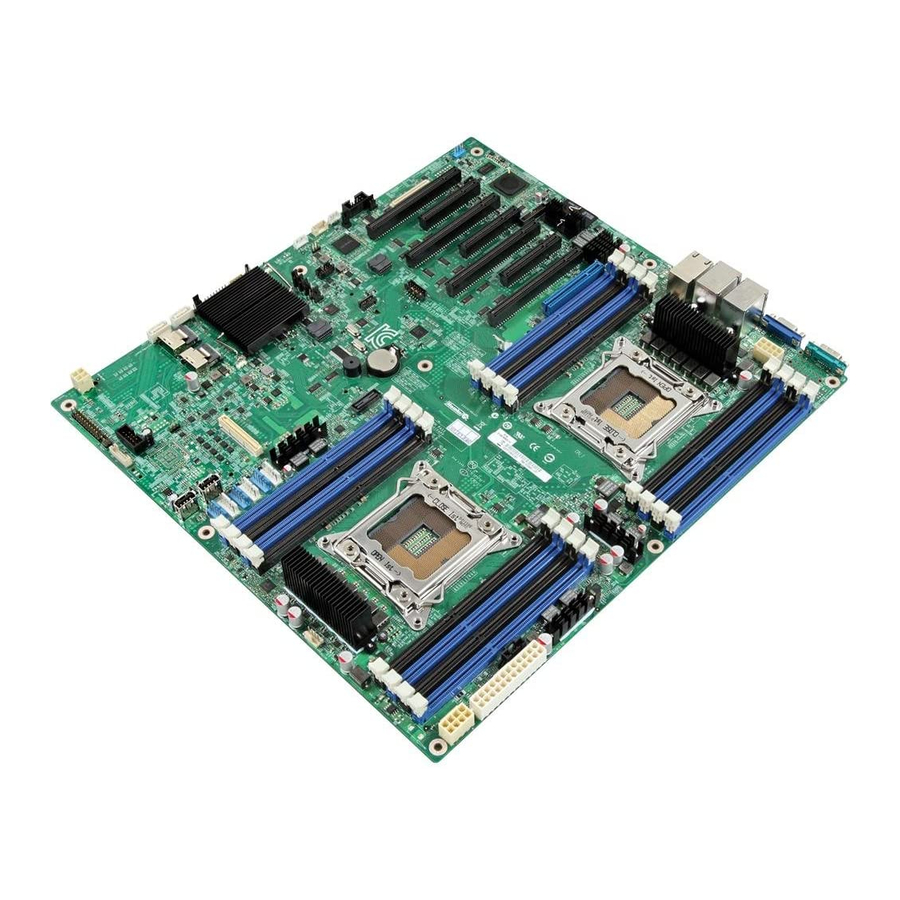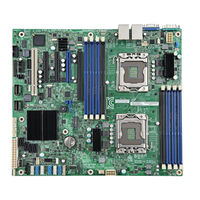
Intel S2600CO Family Manuals
Manuals and User Guides for Intel S2600CO Family. We have 2 Intel S2600CO Family manuals available for free PDF download: Technical Product Specification, Manual
Intel S2600CO Family Technical Product Specification (168 pages)
Brand: Intel
|
Category: Server Board
|
Size: 4 MB
Table of Contents
-
-
-
-
-
-
BMC Watchdog68
-
-
User Model74
-
-
-
-
-
HSBP_I2C Header100
-
HDD LED Header101
-
-
TPM Connector102
-
PMBUS Connector102
-
IPMB Connector103
-
Fan Connectors103
-
-
Video Connector104
-
-
-
-
-
-
Cross Loading119
-
Standby Output120
-
-
-
Product ID146
-
HSC Availability149
-
-
Glossary
165
Advertisement
Intel S2600CO Family Manual (141 pages)
EPSD Platform Based on Intel Xeon Processor E5 4600/2600/2400/1600/1400 Product families
Brand: Intel
|
Category: Motherboard
|
Size: 1 MB
Table of Contents
-
-
-
-
Power Unit44
-
Power Supply48
-
-
Fan Sensors55
-
-
-
-
-
-
-
-
-
Button Sensor110
-
-
IPMI Watchdog111
-
SMI Timeout112
-
-
-
-
-
Advertisement

